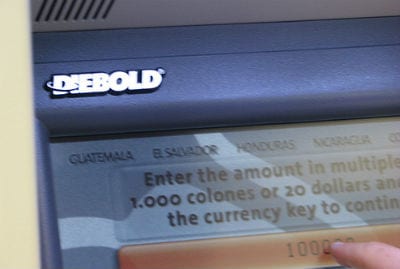How does the ground-level view of the field service industry experienced by technicians differ from that of top managers? Few people are better positioned to answer that question that Diebold’s John Callen, who started with the ATM and security-service company as a technician in 1986 and worked himself up to director of service operations and planning, managing 3,800 service techs. The SmartVan spoke to him about how things have changed during his tenure at Diebold, and what he learned from his early experience manning the van.
How does your experience as a technician color your management style?
When I go out and ride with technicians today, I realize that everything has moved forward. It’s allowed me to try and keep myself open. I always reference back to when I was a technician, and then I stop and think: “What is it like with the technology, the change in processes, the change in the customer culture now?” What it’s allowed me to do is say that was my point of reference. What is different now?
What are the major differences between field service now and when you were starting out?
It’s incredibly different these days. I think what’s really changed is the customer culture. Back in the early ’80s when I was a technician, [customers] bought your brand. They paid list price and when you got there, you got there. We just endeavored to do the best we could and then moved on.
Now, it’s SOAs [service-oriented architecture]. Everything is just a lot more into leaning things out. It’s a constant: “How can we do better? How can we be more efficient?” Back when I was a technician, cost wasn’t really an issue. Nowadays everyone’s trying to cut back and save that euro or dollar or pound, so they’re doing whatever they can.
How have those changes affected your management style, and what do you feel is essential to focus on in this tough environment?

When I go from country to country and from place to place in the U.S., I look at the baseline of where they’re at now and say, “OK, this is the national standard,” or “this is the global standard. This is where they’re at now. What one thing can we do to improve them?”
We do a lot of value-stream management at Diebold, a lot of, “OK, you did alright last year, but what can we improve?” We’re going to take the worst thing that you did, whether it’s parts inventory or response time, and we’re going to work on that. We’re going to make that better for next year, so it’s a constant improvement.
Has the technology changed equally drastically?
When I was a technician, the customer would call the office, and then the next day we’d get a ticket and we’d go out and we’d work on it. Nowadays everything’s automated. The customer now can get online. They go through our customer portal, and they’ll say, “I need John to come out and fix this.” [Our system] will go through all the different technicians that we have, and it’ll decide, well, John’s not the one with the skill set. Jessica’s just come back from that school and she has the parts, so we’re going to send her because she’s that much closer. Before it was very manually operated. Now it’s very automated, looking at the best skill set and the closest person with the right tools.
How has that changed the experience of being a field service technician? Is it a harder gig these days?
It’s a change and service technicians typically don’t like change, so it becomes difficult. Before I had my area or I had my customer and it was me and the customer against Diebold and the world. Now the technicians are given support, whether they want it or not. The technicians are given technology.
We know exactly when they got there, how long it took them to fix it and what parts they used, so it’s more invasive, but to a point where we’re going to arm them next time with the right things to work it. We’re trying to take the stress out of it by making the decisions for them. We’re trying to make sure they have the right part, whereas before it was my problem to figure it out. So it’s helped them out a lot, but in a more hectic, big city kind of way.
Have the shifts in the industry changed the type of people who are attracted to working in field service?
For some people, [the changes] have been a good thing. I think the people who want to change, they say, “Yeah, this is right, I can do this.” They stayed with it. For people who just want to come in and do their eight-to-five, they’re not good. The folks that didn’t want to change, that didn’t want the hectic, go fast kind of mentality, they just found something else to do. It’s been a harsh business at times.
But we’re getting a lot of young kids nowadays that are competitive. They want to charge forward. They want to be busy. They don’t want that time in between. We’re getting kids that grew up with computers and games. A lot of the menus that we have on our products, they look at them and say, “Oh, this is intuitive. I can handle this.” Some of our older technicians maybe have to study and practice and memorize.
And how about yourself, did you find the changes difficult?
I came from the military. The military is: “We gotta get this fixed now!” So when I come into Diebold, that’s just when the culture was starting to change where we had competition out there, so I fit into that mold rather well as it was changing.


Share this: